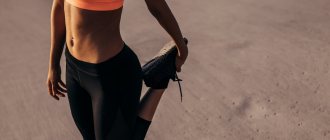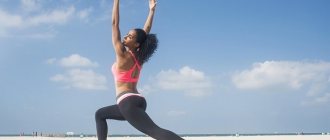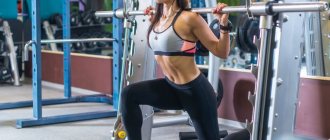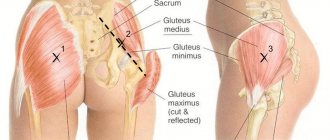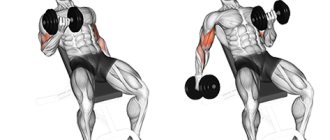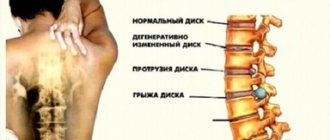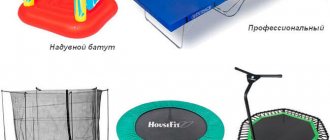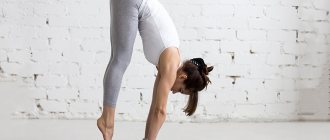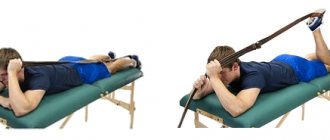Benefits of stretching
- First of all, it improves a man's sexual health. Due to the fact that during exercise, blood flows abundantly to the groin area, potency improves. This promotes physical and mental health.
- Well-warmed muscles are more resilient. This means that any workout will be much more effective if you stretch well before it.
- Reduces the risk of injury and damage. This applies to stretching not only before training, but also before any physical activity.
Did you know? The more flexible and prepared the muscles, the easier it is for the body to cope with lifting weights, carrying loads, and even just long-term sedentary work.
Stretching
Stretching makes muscles flexible, strong and healthy, and we need this flexibility to maintain range of motion in our joints. Without it, the muscles contract and become tight. Then, when you bring the muscles into activity, they become weak and cannot work at their full potential. This puts you at risk for joint pain, strains and muscle damage.
Stretching can help improve flexibility and range of motion in your joints. Increasing flexibility can:
- Improve your physical performance;
- Reduce the risk of injury;
- Help your joints move through a full range of motion;
- Allow your muscles to work most efficiently
Why is stretching more important than you think?
Stretching increases blood flow to muscles and joints, reducing stiffness. Regular stretching improves joint flexibility and mobility. Building muscle strength and flexibility keeps your back healthy and strong, preventing back pain. Stretching exercises help reduce the risk of muscle and ligament strains.
Stretching Tips for Men
- Before the start of the lesson, it is necessary to warm up the muscles well; to do this, it is enough to perform the exercises known to everyone;
- Stretching must be performed in several approaches, optimally 3-4 times;
- The time of each approach should be limited in time. The most effective is considered to be done for 30 seconds to a minute;
- Do not overestimate your strengths, remember that it is better to do less than to overdo it, harming yourself and stopping the activity;
- There is no room for sudden movements in stretching. Everything must be done smoothly and slowly;
- Be attentive to your feelings. Stretching should not lead to unpleasant sensations, much less pain. Such symptoms only indicate muscle overstrain;
- Watch your breathing. This is what contributes to the effectiveness of classes. Timely inhalation and exhalation relieves muscle tension, relaxing the body, reducing resistance.
Important! Only with regular exercise can you achieve noticeable results. On average, this requires stretching at least 2-3 times a week.
Should you stretch if you are a bodybuilder: expert advice
Many men who work out in gyms with weights neglect stretching, believing that full and “clogged” muscles are their normal condition. However, this can lead to unpleasant consequences.
When you exercise, your muscles become thicker and tougher over time, but they also shorten. Over time, muscle fibers become toned and begin to work less efficiently than before, only slowing down the progress of your training. In addition, unstretched muscles cause “tightness” in the joints, preventing you from technically performing the exercises correctly.
View this post on Instagram
A post shared by Jean-Claude Van Damme (@jcvd) on Sep 6, 2022 at 2:19pm PDT
Nikolai Sokolov international master of sports in powerlifting , stretching also helps improve muscle recovery after exercise.
— I do stretching after training without fail and recommend it to my players to improve recovery.
In addition to simply improving mobility and relieving excess tension, muscle elasticity also affects your endurance. A stretched and warmed muscle can withstand a much greater load than a shortened and dense one.
Anyone can learn to stretch, regardless of age or body flexibility. It is enough to regularly perform a set of simple exercises every day for several months, and you yourself will not notice how you will be able to stand on a “bridge” or do the splits. The clearest example of a perfectly coordinated, stretched out and at the same time strong and pumped up athlete is the American Jim Call . Despite all the incredible number of strange and freaky exercises he performed in the video, he did not receive any serious injuries.
View this post on Instagram
A post shared by Jon Call (@jujimufu) on Jan 4, 2022 at 10:01am PST
I have seen the benefits of stretching from personal experience. True, before that he ignored her for a long time, which led to an injury in the form of a rupture of the semitendinosus muscle on his left leg. It was the tightness of the muscles that led to the injury at maximum tension while performing an exercise with a record weight for me. After this incident and a long rehabilitation, light stretching became common practice. I no longer remembered any injuries, the feeling of being “clogged” or pain in my legs or lower back after squats or deadlifts.
If you work out in the gym and suffer from high blood pressure, then stretching may also help solve this problem. At least, I was convinced of this from personal experience.
Light stretching after exercise can be done in 10-15 minutes. It is enough to choose a couple of exercises for the muscles that were involved during the workout and stretch them. You need to stay in each pose for 30-60 seconds, making a couple of approaches.
As noted by Honored Master of Sports in powerlifting, world and European champion Yulia Zaugolova , stretching is necessary for every athlete who engages in strength sports.
“Tense and acidified muscles are the path not only to illness, but also to injury. It is important to follow the principles of periodization and properly warm up, cool down and stretch. The elastic muscle will not tear. Athletes who neglect stretching are doomed to injury. It is the matter of time".
Stretching exercises at home
These exercises can be performed as a warm-up before starting strength training, or as a full-fledged lesson. No special equipment is required to perform them, so everything can be easily done at home or outdoors.
Knee to chest
Stand straight, confidently resting on both feet. Bend your right leg at the knee and pull it towards your chest.
Ideally, the knee should be pressed tightly against the body, but this does not need to be achieved if the exercise is being performed for the first time. Find your maximum possible and stay in this pose, helping yourself with your hands.
"Frog"
Sitting on the floor, pull your legs towards you as much as possible, placing your feet on the floor. Slowly begin to spread your knees out to the sides, aiming to place them on the floor.
You can help yourself with your hands, lightly pressing your elbows on your knees. Don't press too hard, there shouldn't be any pain.
"Frog Lying"
Lie on your back and, bending your knees, begin to spread them in different directions, trying to place your thigh on the floor.
You can help yourself with your hands, but no sudden movements.
Lunges
Take a big step forward with your right foot. The bent knee of the front leg should form an angle of 90 degrees.
The left leg should be straight. During the exercise, you can put your hands on your belt; if it becomes difficult, you can lower them to the floor.
"Ring"
Lunge forward with your right leg as in the previous exercise. Then, bending your left leg, gradually sit down on it, fully straightening your right leg.
When performing the exercise, pull the toe of your right foot towards you to better feel your calves.
"Pigeon"
Sit on the floor, bend your right leg in front of you at the knee. Gently move your left one back and try to press your thigh to the floor.
You should feel the upper thigh well.
Cross twine
Sit on the floor with your straight legs spread as wide as possible. Bend your body forward, aiming your chest towards the floor.
Make sure your back remains straight and your toes point up.
"Child's Pose"
Sit on your heels, spread your legs slightly, pointing your knees in different directions. Lean forward with your body on your knees.
Stretch your arms forward on the floor as far as possible. You should feel the muscles of your back and arms.
What are the benefits of anti-gravity fitness training in a hammock?
In addition to the benefits for the spine, these types of activities are beneficial for many more.
For example, the benefits of antigravity are as follows:
- improves blood circulation;
- slows down the aging process;
- improves brain function;
- develops flexibility, strengthens muscles throughout the body;
- promotes the production of happiness hormones;
- improves mood;
- creates a feeling of inner balance.
The level of physical fitness, level of stretching and flexibility, age and weight for these types of activities are absolutely not important!
Anyone can come and work out!
Should it hurt?
Stretching is not the most painless activity, just like any workout from which we want to achieve results. Calm music will help you concentrate and relax the necessary muscle groups.
When stretching, two types of pain occur:
- with the correct position of the body, tension arises, turning into a pulling, pleasant pain, while the muscles “breathe” and are saturated with oxygen. By the way, proper breathing during stretching - with a deep inhalation and a long exhalation - helps reduce such pain to zero;
- if you do not maintain the correct body position during the exercise or overdo it with intensity, a nerve may be pinched, and as a result, sharp, severe pain occurs. This is a signal that you need to stop, correct your posture and start stretching again.
Contraindications for anti-gravity yoga?
But there are still some contraindications in which it is better to refrain from these workouts.
Contraindications for classes:
- increased body temperature;
- increased blood or intracranial pressure (glaucoma);
- inflammatory diseases of internal organs (gastritis, pyelonephritis, cholecystitis);
- concussion, inflammatory diseases in the head area (sinusitis, sinusitis);
- spinal injuries, hernias;
- oncological diseases;
- diseases of the cardiovascular system (ischemic heart disease, thrombosis, atherosclerosis).
Recommendation!
If you feel unwell, weak, or in the first days of your menstrual cycle, it is better to postpone training.
Arm and Shoulder Stretch
Triceps stretches are essential even if you don't do push-ups or lift weights. This exercise helps strengthen the muscles in the back of the arm to maintain its definition. It can be performed standing or kneeling. Keep your feet hip-width apart and your arms extended above your head. Bend your elbow and touch your upper back. With your free hand, pull your bent elbow down and toward your head.
Read also: Itching in the legs, causes and treatment
© self.com
Shoulders endure high levels of stress every day, especially with a sedentary lifestyle. Posture, gait, proper blood circulation and back health also depend on the health of these muscles. Shoulder exercises can be performed standing, sitting or lying down depending on the desired intensity and circumstances.
The palms and fingers need to relieve tension, especially if you work at the computer for a long time. This set of short exercises can be performed without leaving your desk.
Can everyone do the splits?
There are 2 types of splits: longitudinal - one leg in front, the other in back, as if you took a wide step:
Anastasia Zavistovskaya shows the longitudinal split.
...and transverse (legs to the sides, like Van Damme on two chairs):
So, anatomically, all people can do the longitudinal splits - this is how our body is designed.
The cross split is a little more difficult: there is a small percentage of people who will not be able to do the cross split. But this percentage is very small! Although, as my experience shows, every time I talk about this, everyone who has not yet mastered the crossbar immediately assigns themselves to this percentage.
No split is considered easier or more difficult . Everything is different for everyone. If the structure of your pelvis is such that the acetabulums (see photo) are shallow and look more to the side, then the transverse one will be easier for you, and if the acetabulums look more forward, then it will be easier with the longitudinal one.

